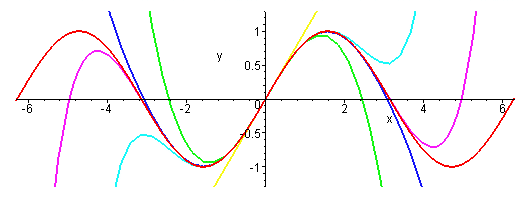When surfing the web, I like to visit
medicalphysicsweb.org. This site, maintained by the
Institute of Physics, always publishes interesting and up-to-date information about physics applied to medicine. Readers of the 5th Edition of
Intermediate Physics for Medicine and Biology should visit it regularly.
A recent
article discusses a paper by
Michelle Espy and her colleagues about “
Progress Toward a Deployable SQUID-Based Ultra-Low Field MRI System for Anatomical Imaging” (
IEEE Transactions on Applied Superconductivity, Volume 25, Article Number 1601705, June 2015). The abstract is given below.
Magnetic resonance imaging (MRI) is the best
method for non-invasive imaging of soft tissue anatomy, saving
countless lives each year. But conventional MRI relies on very
high fixed strength magnetic fields, ≥ 1.5 T, with parts-per-million
homogeneity, requiring large and expensive magnets. This
is because in conventional Faraday-coil based systems the signal
scales approximately with the square of the magnetic field.
Recent demonstrations have shown that MRI can be performed
at much lower magnetic fields (∼100 μT, the ULF regime).
Through the use of pulsed prepolarization at magnetic fields from
∼10–100 mT and SQUID detection during readout (proton
Larmor frequencies on the order of a few kHz), some of the
signal loss can be mitigated. Our group and others have shown
promising applications of ULF MRI of human anatomy including
the brain, enhanced contrast between tissues, and imaging in
the presence of (and even through) metal. Although much of
the required core technology has been demonstrated, ULF MRI
systems still suffer from long imaging times, relatively poor quality
images, and remain confined to the R and D laboratory due to the
strict requirements for a low noise environment isolated from
almost all ambient electromagnetic fields. Our goal in the work
presented here is to move ULF MRI from a proof-of-concept
in our laboratory to a functional prototype that will exploit the
inherent advantages of the approach, and enable increased accessibility.
Here we present results from a seven-channel SQUID-based
system that achieves pre-polarization field of 100 mT over a
200 cm3 volume, is powered with all magnetic field generation
from standard MRI amplifier technology, and uses off the shelf
data acquisition. As our ultimate aim is unshielded operation,
we also demonstrated a seven-channel system that performs ULF
MRI outside of heavy magnetically-shielded enclosure. In this
paper we present preliminary images and compare them to a
model, and characterize the present and expected performance of
this system.
Let’s compare a standard 1.5-
Tesla clinical MRI system with
Espy et al.’s ultra-low field device. To compare quantities using the same units, I will always express the magnetic field strength in mT; a typical clinical MRI machine has a field of 1500 mT. In Section 18.3 of
IPMB,
Russ Hobbie and I show that the magnetization depends linearly on the magnetic field strength (Equation 18.9). The static magnetic field of Espy et al.’s machine is 0.2 mT, but for 4000 ms before spin excitation a polarization magnetic field of 100 mT is turned on. Thus, there is a difference of a factor of 15 in the magnetization, with the ultra-low device having less and the clinical machine more. Once the polarization field is turned off, the magnetic field in the ultra-low device reduces to 0.2 mT. This is only four times the
earth’s magnetic field, about 0.05 mT. Espy et al. use
Hemlholtz coils to cancel the earth’s field.
A magnetic field of 1500 mT is usually produced by a coil that must be kept at low temperatures to maintain the
wire as a
superconductor. A 100 mT field does not require superconductivity, but the needed current
generates enough heat that the 510-turn copper coil needs to be cooled by
liquid nitrogen, and even still the current in the coil must be turned off half the time (50%
duty cycle) to avoid overheating.
Once the polarization field turns off, the spins precess with the
Larmor frequency for a 0.2 mT magnetic field. The
gyromagnetic ratio of
protons is 42.6 kHz/mT, implying a Larmor frequency of 8.5 kHz, compared with 64,000 kHz for a clinical machine. So, the Larmor frequencies differ by a factor of 7500.
The magnetic resonance signal recorded in a clinical system is large compared to an ultra-low device because the magnetization is larger by a factor of 15 and the Larmor frequency is larger by a factor of 7500, implying a signal over a hundred thousand times larger. Espy et al. get around this problem by measuring the signal with a Superconducting Quantum Interference Device (SQUID) magnetometer, like those used in
magnetoencephalography (see Section 8.9 in
IPMB).
Preliminary experiments were performed in a heavy and expensive magnetically shielded room (again, like those used when measuring the MEG). However, second-order gradiometer pickup coils reduce the noise sufficiently that the shielded room is unnecessary.
To perform imaging, Espy et al. use magnetic field gradients of about 0.00025 mT/mm, compared with 0.01 mT/mm gradients typical for clinical MRI. For two objects 1 mm apart, a clinical imaging system would therefore produce a fractional frequency shift of 0.01/1500 = 0.0000067 or 6.7
ppm, whereas a low-field device has a fractional shift of 0.00025/0.2 = 0.00125 or 1250 ppm. Therefore, the clinical magnetic field needs to be extremely homogeneous (on the order of parts per million) to avoid artifacts, whereas a low-field device can function with heterogeneities hundreds of times larger.
The relaxation time constants for gray matter in the brain are reported by Espy et al. as about
T1 = 600 ms and
T2 = 80 ms. In clinical devices, the value of T1 is about half that, and T2 is about the same. Based on Figure 18.12 and Equation 18.35 in
IPMB, I’m not surprised that T2 is largely independent of the magnetic field strength. However, in strong fields T1 increases as the square of the magnetic field (or the square of the Larmor frequency), so I was initially expecting a much smaller value of T1 for the low-field device. But once the Larmor frequency drops to values less than the typical
correlation time of the spins, T1 becomes independent of the magnetic field strength (Equation 18.34 in
IPMB). I assume that is what is happening here, and explains why T1 drops by only a factor of two when the magnetic field is reduced by a factor of 7500.
I find the differences between
radio-frequency excitation pulses to be interesting. In clinical imaging, if the excitation pulse has a duration of about 1 ms and the Larmor frequency is 64,000 kHz, there are 64,000 oscillations of the radio-frequency magnetic field in a single π/2 pulse. Espy et al. used a 4 ms duration excitation pulse and a Larmor frequency of 8.5 kHz, implying just 34 oscillations per pulse. I have always worried that illustrations such as Figure 18.23 in
IPMB mislead because they show the Larmor frequency as being not too different from the excitation pulse duration. For low-field MRI, however, this picture is realistic.
Does low-field MRI have advantages? You don’t need the heavy, expensive superconducting coil to generate a large static field, but you do need SQUID magnetometers to record the small signal, so you don’t avoid the need for
cryogenics. The medicalphysicsweb article weighs the pros and cons. For instance, the power requirements for a low-field device are relatively small, and it is more portable, but the imaging times are long. The safety hazards caused by metal are much less in a low-field system, but the impact of stray magnetic fields is greater. I’m skeptical about the ultimate usefulness of
ultra low-field MRI, but it’ll be fun to watch if Espy and her team can prove me wrong.







